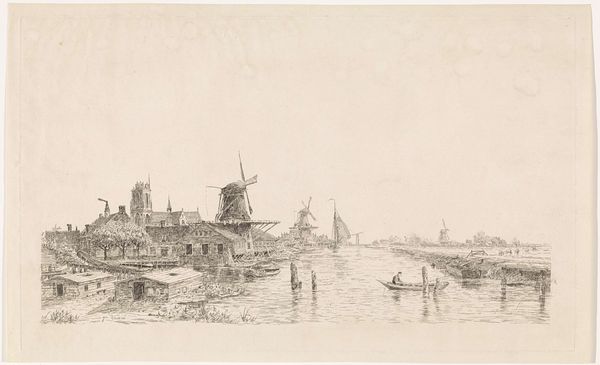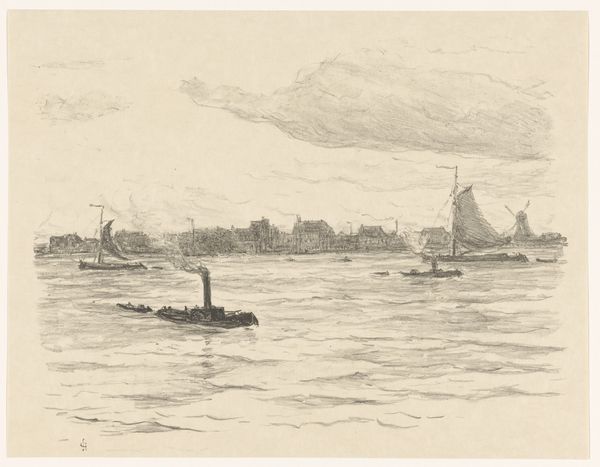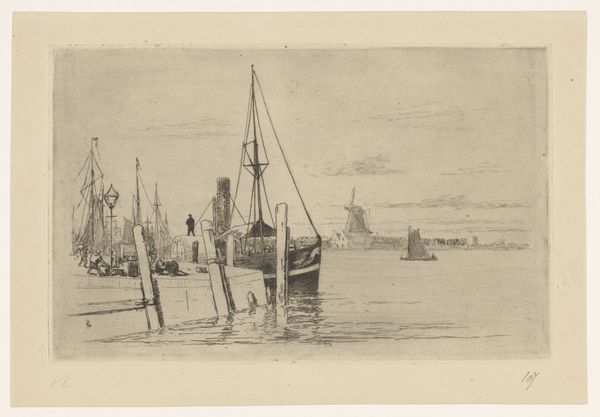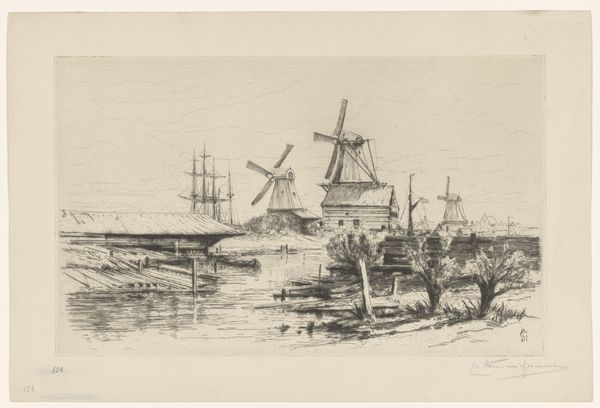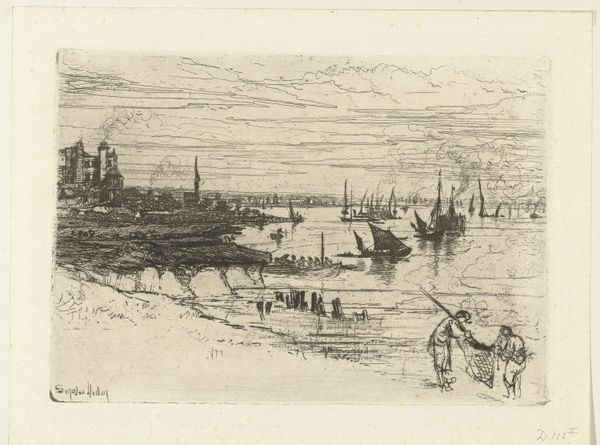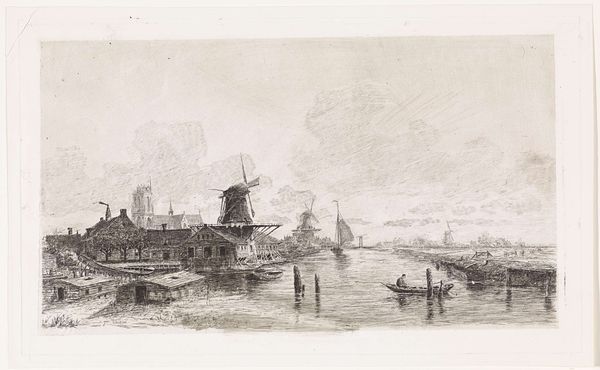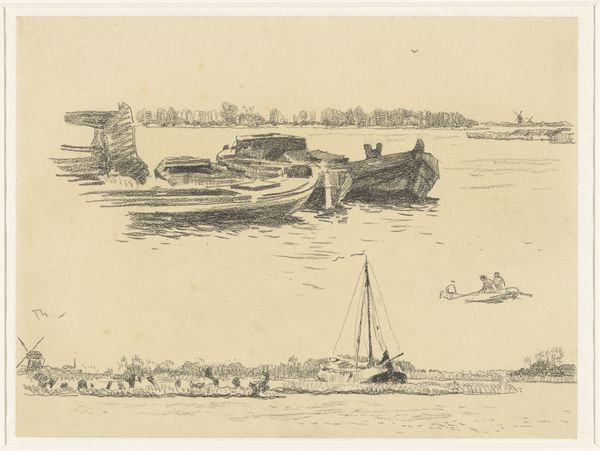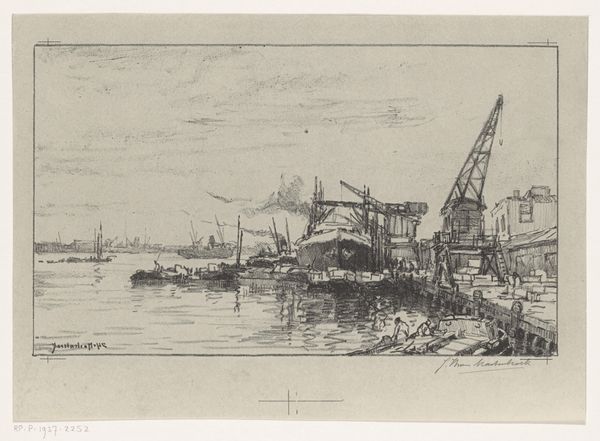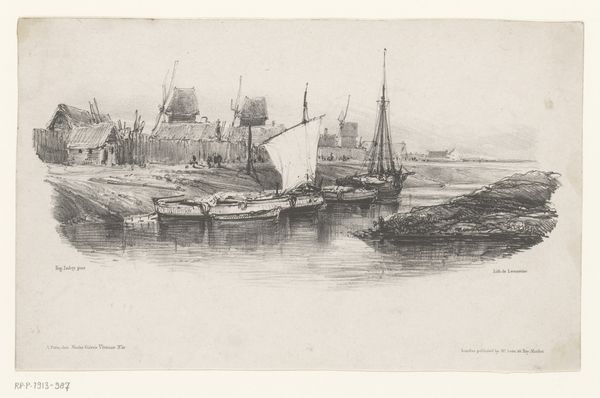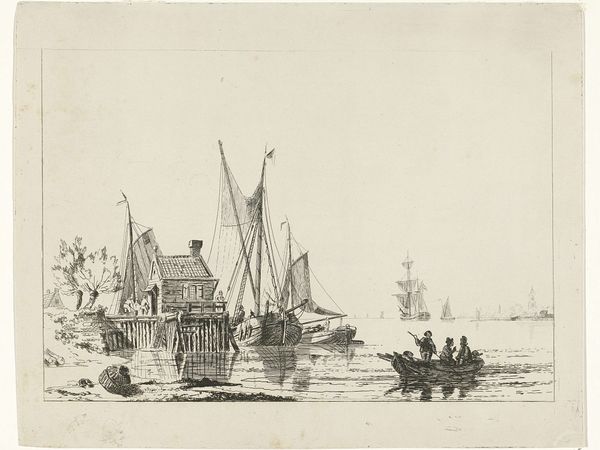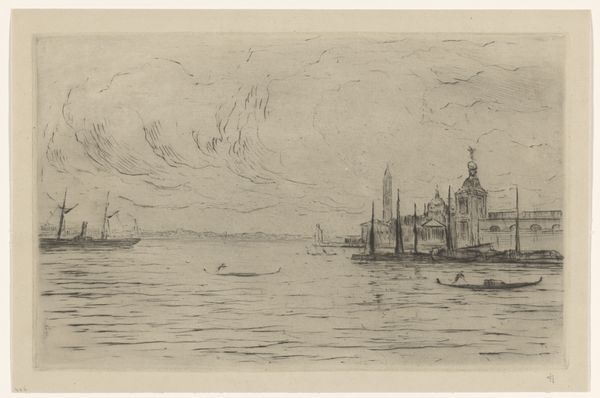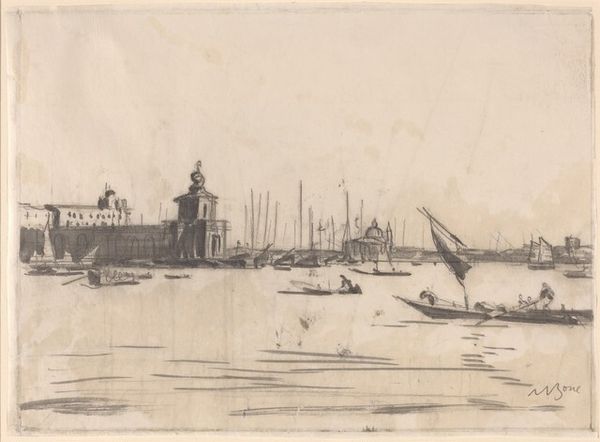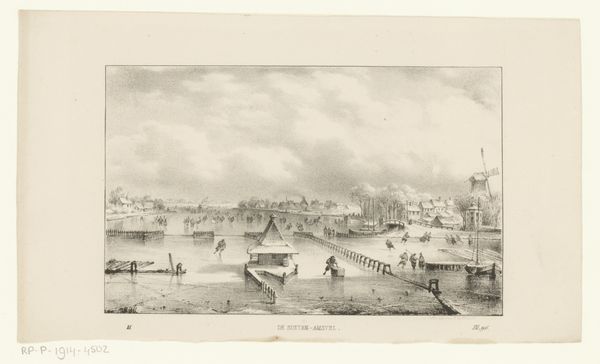
print, etching
#
dutch-golden-age
# print
#
etching
#
landscape
#
cityscape
Dimensions: width 202 mm, height 146 mm
Copyright: Rijks Museum: Open Domain
Johan Conrad Greive made this print of the Waal River at Nijmegen using etching, a printmaking technique, sometime in the mid- to late-19th century. The scene is set on the river Waal and captures the river's use for both industry and agriculture. Through visual codes like the disheveled workers and the use of animals as an integral part of the supply chain, the print shows that people depend on the river for their livelihoods. The Netherlands has long depended on its waterways for trade and agriculture, which has had a great impact on the nation's economy and culture. The location of the etching at Nijmegen is relevant as it is one of the oldest cities in the Netherlands and was an important Roman military settlement. To understand this artwork, one could research the history of trade and agriculture along the Waal river as well as the rise of Dutch Etching during the 1800s.
Comments
No comments
Be the first to comment and join the conversation on the ultimate creative platform.

